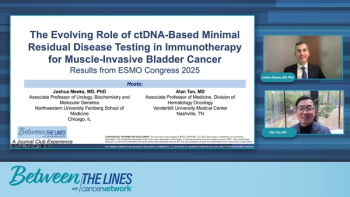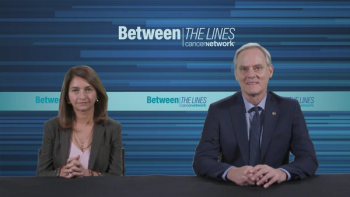
Understanding ICANS Management With CAR T: Low-Grade Events With High Resolution Rates
Panelists discuss how immune cell–associated neurotoxicity syndrome data mirrors cytokine release syndrome patterns, with 70% of patients experiencing no neurotoxicity, only 5% to 7% developing grade 3 or higher events, and most toxicities occurring early and resolving within 1 week, further supporting arguments for modified monitoring approaches.
Episodes in this series

Video content above is prompted by the following:
Immune cell–associated neurotoxicity syndrome (ICANS) data from the comprehensive analysis showed patterns similar to cytokine release syndrome (CRS), with approximately 70% of patients experiencing no neurotoxicity and only 5% to 7% developing grade 3 or higher events. The median time to onset was approximately 1 week post infusion, with events typically resolving within the same timeframe. Late-onset ICANS (beyond 15 days) occurred in 12% of clinical trial patients and 5% of real-world patients, but these events were predominantly low grade and manageable with standard interventions.
The evolution of ICANS management reflects growing clinical confidence in treating these toxicities. Early clinical trials had strict limitations on interventions due to concerns about potentially interfering with CAR T-cell function. However, accumulated evidence now supports more aggressive and even preemptive management of neurotoxicity using tocilizumab, dexamethasone, and other therapies without compromising CAR T-cell efficacy. This therapeutic confidence has contributed to improved real-world outcomes compared to early clinical trial experiences.
The timing data for both CRS and ICANS reinforces that the majority of significant toxicities occur within the first 14 days post infusion, with peak onset in the first week. Late-onset events, while possible, are rare and typically mild when they do occur. This temporal pattern supports risk-stratification approaches to monitoring, where intensive surveillance during the first 2 weeks could potentially be followed by modified monitoring protocols that maintain safety while improving patient quality of life and treatment accessibility.
Newsletter
Stay up to date on recent advances in the multidisciplinary approach to cancer.

















































































